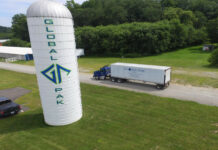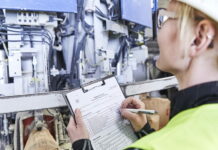Automate 2023 happened months ago. The show floor teemed with cutting-edge solutions for automating packaging processes within product manufacturing plants. While the event catered to diverse niches, it was the novel ideas and displays focused on e-commerce fulfillment that truly captured the essence of transformation in this industry.
Challenges in e-commerce fulfillment have been an ongoing concern, encompassing the management of high-order volume spikes, quick and reliable delivery operations, efficient inventory and return management, labor-intensive processes, and packaging variability. Automate 2023 offered a glimpse into how packaging automation could be the key to addressing these challenges.
The technologies exhibited at Automate 2023 promised substantial advantages for product manufacturing plants seeking to optimize their e-commerce fulfillment processes. From advanced robotics to autonomous mobile robots, these technologies brought forth a host of benefits:
- Enhanced Efficiency and Speed: Automation handled repetitive tasks, such as picking, packing, and labeling, with unmatched precision and consistency. This led to faster order processing times, reduced chances of delays, and prompt deliveries to customers.
- Improved Accuracy and Reduced Errors: Packaging automation eliminated human errors with technologies like bar-code scanners and computer vision systems that ensured product information verification, guaranteeing the right items were packaged correctly.
- Customization and Scalability: Automation allowed for customization and scalability, accommodating varying order volumes and specific needs, whether it was selecting the right box sizes, adding personalized branding, or incorporating special packaging materials.
- Cost Reduction and Sustainability: Optimized cartonization algorithms minimized material usage, reduced waste, and lowered shipping costs. Handling larger order volumes with fewer labor sources resulted in cost efficiency. Embracing sustainable packaging materials aligned with eco-conscious consumer demands.
- Real-time Tracking and Customer Satisfaction: Real-time tracking and monitoring systems enhanced transparency and accurate delivery estimates, leading to improved customer satisfaction and loyalty.
- Integration with Warehouse Management Systems: Packaging automation integrated with warehouse management systems streamlined operations, reducing manual intervention from inventory management to order processing.
In e-commerce, businesses continually grapple with the pressure to optimize their fulfillment processes. Packaging automation emerged as a crucial component in this pursuit. The solutions showcased at Automate 2023 have the potential to revolutionize how products are prepared and shipped to customers, providing a competitive edge in the rapidly evolving digital marketplace and overcoming current e-commerce fulfillment challenges.
Robotic pick-and-place systems:
The advanced robotic technologies integrated into pick-and-place systems efficiently handle, sort, and package products with precision and speed, significantly reducing fulfillment time and errors. These robots handle greater volumes than manual methods, freeing up individuals to focus on more strategic tasks. Furthermore, pick-and-place solutions contribute to a safer workplace environment by reducing the risk of injuries associated with repetitive motions and heavy objects.
Automated cartonization for efficient packaging:
In the context of industrial manufacturing, automated cartonization systems optimize box sizes based on item dimensions. These solutions minimize wasted space, reduce shipping costs, and enhance sustainability efforts by using fewer materials. Additionally, they streamline the packaging process, saving both time and money. This is especially beneficial when addressing the issue of placing small orders in oversized boxes, which can lead to the need for repackaging before shipping.
Autonomous mobile robots (AMRs):
Autonomous Mobile Robots (AMRs) are a noteworthy type of robotics technology that can navigate autonomously within a manufacturing plant. They complete tasks such as transporting products from assembly lines to packaging areas, optimizing warehouse space, and reducing the need for human intervention. The advantages include faster order processing and reduced operational costs.
Collaborative robots everywhere:
Cobots, or collaborative robots, were a prominent presence at the show. These robots are designed to work alongside human operators, enhancing efficiency and safety in packaging operations. Demonstrations showcased their effectiveness in tasks such as picking, packing, and labeling, allowing employees to allocate their time and expertise to more complex and strategic aspects of fulfillment.
Looking to the future, several trends and advancements in packaging automation are on the horizon. These include Artificial Intelligence (AI), 5G, machine interoperability, data analysis, and machine learning. These technologies are set to empower packaging manufacturers in optimizing processes, reducing downtime, and enhancing quality control. The adoption of 5G will further drive process automation, remote monitoring, and virtual training, fostering operational efficiency and continuous improvement.
As technology continues to evolve, packaging automation will play a pivotal role in transforming how products are packaged and delivered worldwide. Embracing automation in fulfillment processes will position e-commerce businesses for success in the fiercely competitive digital marketplace, where exceptional customer experiences are paramount for long-term growth and prosperity. It’s undeniable that packaging automation is an essential investment for those aiming to excel in this ever-evolving landscape.
























